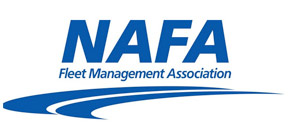Former junkyard becomes a pearl along Grand Junction, Colo., riverfront

It has been a communitywide effort for the last 35 years to turn Dos Rios from a site with over 8,500 salvaged cars to a pearl along the Grand Junction, Colo., riverfront. One of the city’s greatest partners on the project has been One Riverfront, which began pursuing the cleanup of the site in the 1980s and 1990s in order to restore and revitalize the riverfront.

The former junkyard is the first landmark visitors see from the highway when driving to Grand Junction from the south, and it took a great deal of work over the last 35 years to remove the junk cars, clean up the area and then deed the land over to the city. Now it is the site of Dos Rios Park, which received the Columbine Award for new park design during the Colorado Parks and Recreation Association conference in October 2024.
Throughout the process, Grand Junction leaders studied and reached out to other communities to gain best practices. They partnered with various state, federal and nonprofit agencies and utilized natural geological advantages, including Grand Mesa, which lies less than an hour away and features skiing opportunities and desert terrain for hiking and viewing national monuments. Additionally, the city has the benefit of being situated at the confluence of two rivers, and there is an extensive mountain biking trail that cuts right through town and forms part of the Lunch Loop trail system, which is accessible from the town.
Since the 1990s, multiple city departments, the administration, and public and private partnerships have helped to implement the plan to revitalize the riverfront. According to Ken Sherbenou, Grand Junction parks and recreation director, the city is focused on creating “a string of pearls along the river with assets that celebrate Grand Junction. We prioritized turning former uses into better uses.”
In 2019, the first section of Dos Rios Park to be built was the bike park. It was funded mostly through a grant and is designed to promote skill development for children and allow new bikers to practice. It also prepares them for the surrounding, more advanced mountain bike trails. The city then worked with the downtown development authority to put in and connect horizontal infrastructure such as sewer, water and sidewalks.
A shelter and other infrastructures were added to further build out the park. A large playground and a splash pad were added toward the end of last year, and there are twin net towers and a large play structure modeled from the endangered humpback chub fish.

The play structure helps to bring awareness to the fish habitat in the Colorado River and acts as the centerpiece of the playground. There is also a beach along the river.
“A general improvement district was formed, which pledges financing revenues beyond the baseline and assesses a tax that stays in the specific area and can be used to pay off debt on the horizontal infrastructure,” Sherbenou pointed out.
Private funding and the developers are also helping to build up the area. There are future plans for a Starbucks, condominium and cantina along the river. One private developer is focused on mixed-use development, with residences for over 400 families as well as businesses including hotels, restaurants and shopping. “The initial public investment facilitates the private investment,” he explained. “There is a lot more progress to come.”
The downtown and along Main Street are areas that already garner Grand Junction a great deal of recognition. The riverfront at Dos Rios and the Second Street promenade are prominent areas. Eventually, the city is planning on connecting the downtown area to Dos Rios with a bridge so that Dos Rios and the riverfront would become like a “lower downtown.” Officials are currently in the process of finding funding for that project.
Another pearl along the riverfront string of pearls, Las Colonias was built up prior to Dos Rios and is upriver about 1-1/2 miles. Las Colonias was the site of uranium mill tailings, so it required even more cleanup and remediation efforts than Dos Rios. It is now home to a large outdoor amphitheater that seats around 5,000 people, and it is becoming more well-known as a concert venue.
A river park opened in Las Colonias in 2020. It is accessible and acts as good training for inner tubing and kayaking. There are extensive dog parks, and a large feature is a zipline that comes in from Eagle Rim Park.
Along the riverfront trail from Las Colonias is a large open space that needs regular weed control and removal of the foliage for fire mitigation. The city’s weed control method is to allow goats to graze along the river: This is the fourth year for the program, and it continues to expand. Goats are a great, natural way to remove weeds without the use of chemicals and also keeps tamarisk, one of the biggest invasive local plants, from coming back since because once eaten, it is unable to reproduce. The grazing goats have become an unintended amenity for the city.
“I am just one of many who has worked very hard on these projects over many years,” Sherbenou emphasized. “I would encourage other cities to always focus on the long view. Sometimes projects seem so impossible or improbable. However, we really can affect change even if it takes a long time. With everyone moving in the same direction with the long view in mind and seeing the potential, I’ve seen the changes that can be done. Municipal government can affect that change as long as we have the long view.”
Next Article: Rich in history and natural resources: Concord, N.H.



